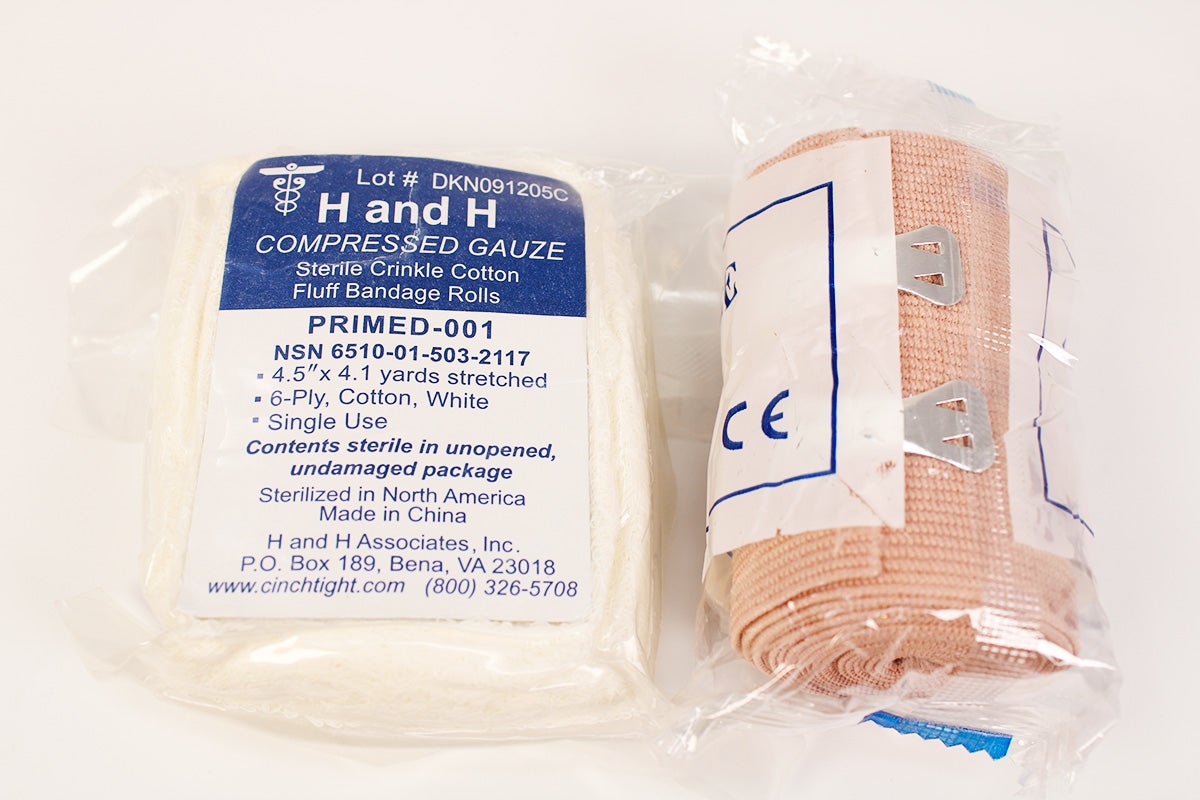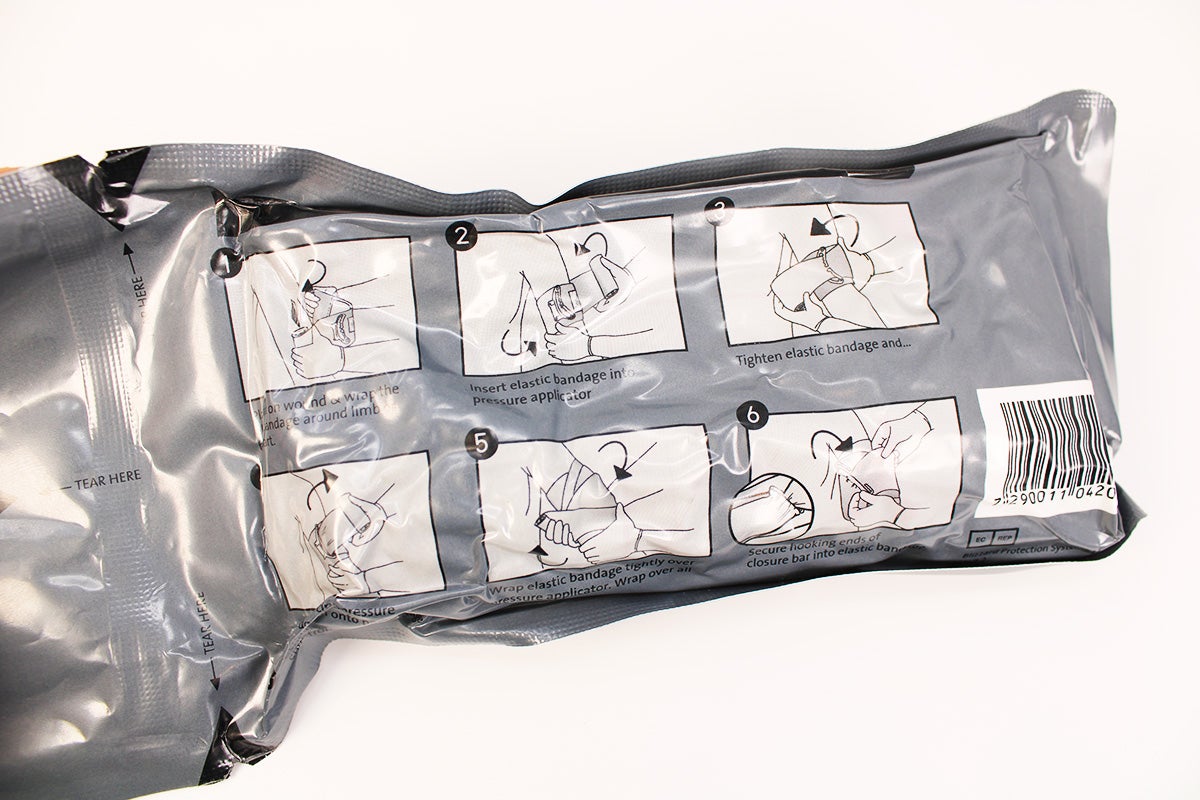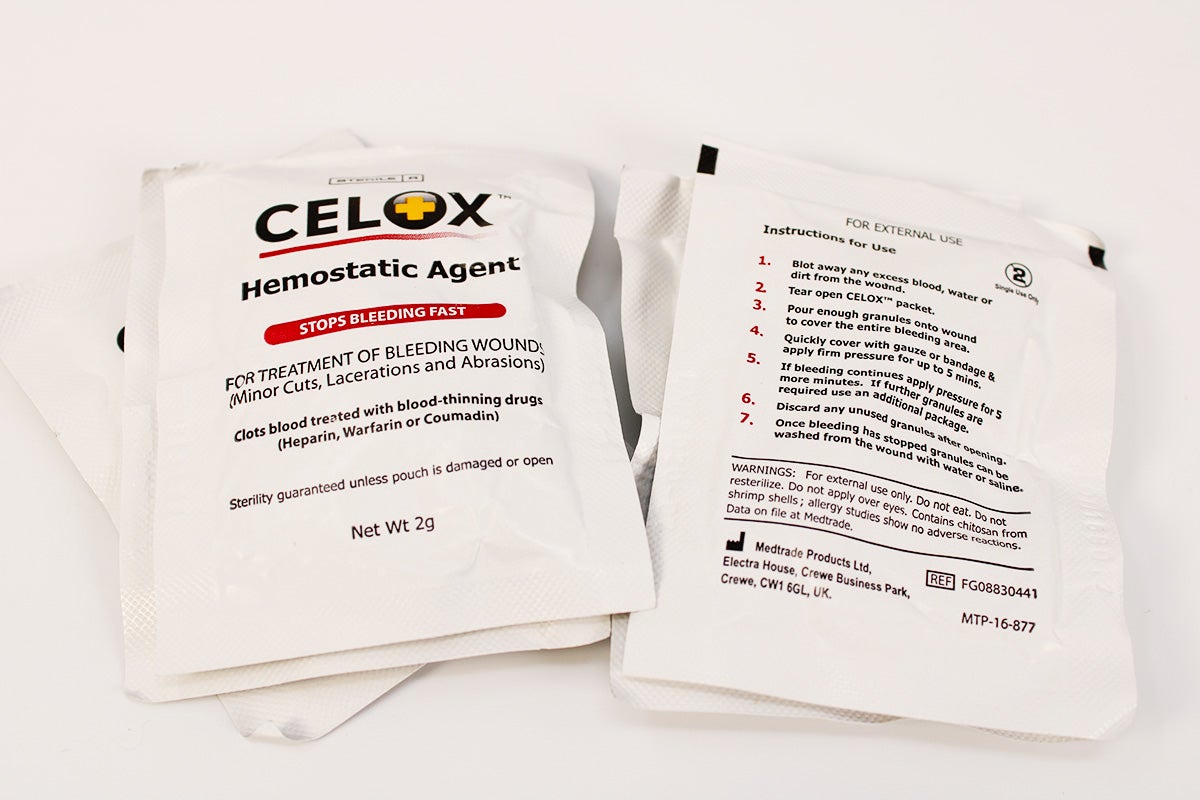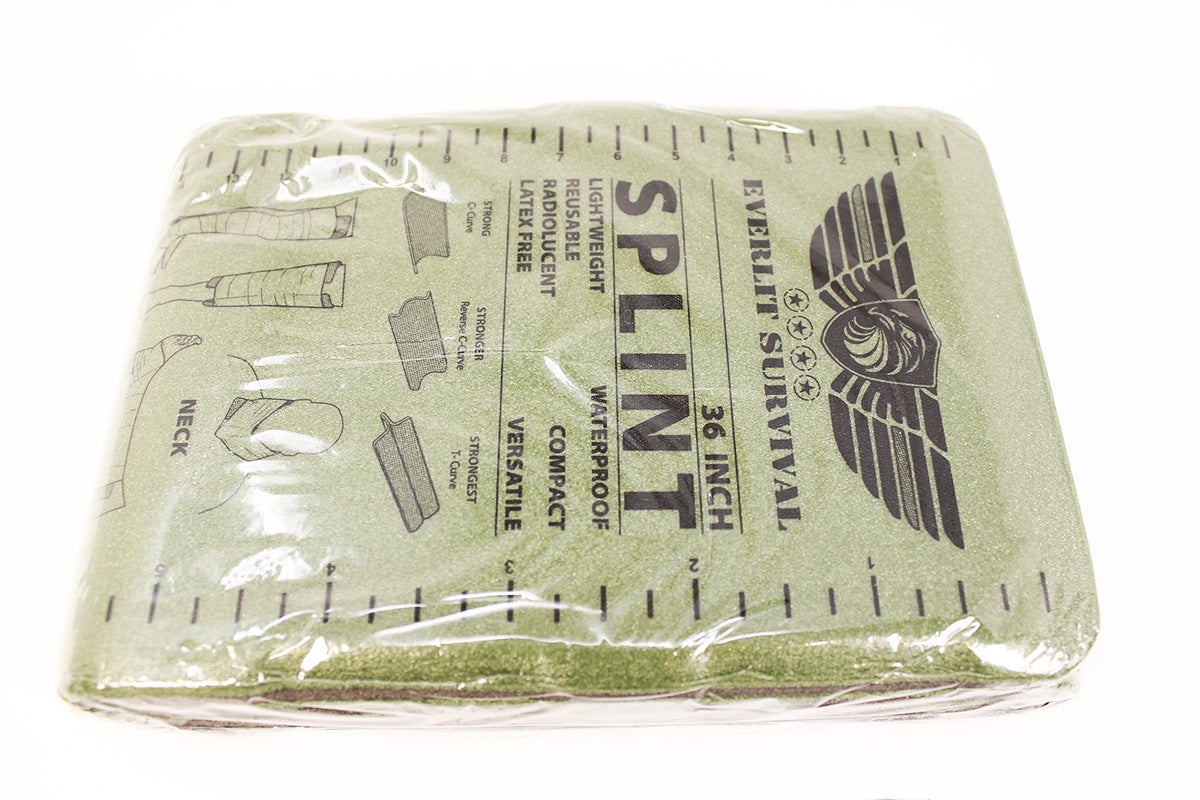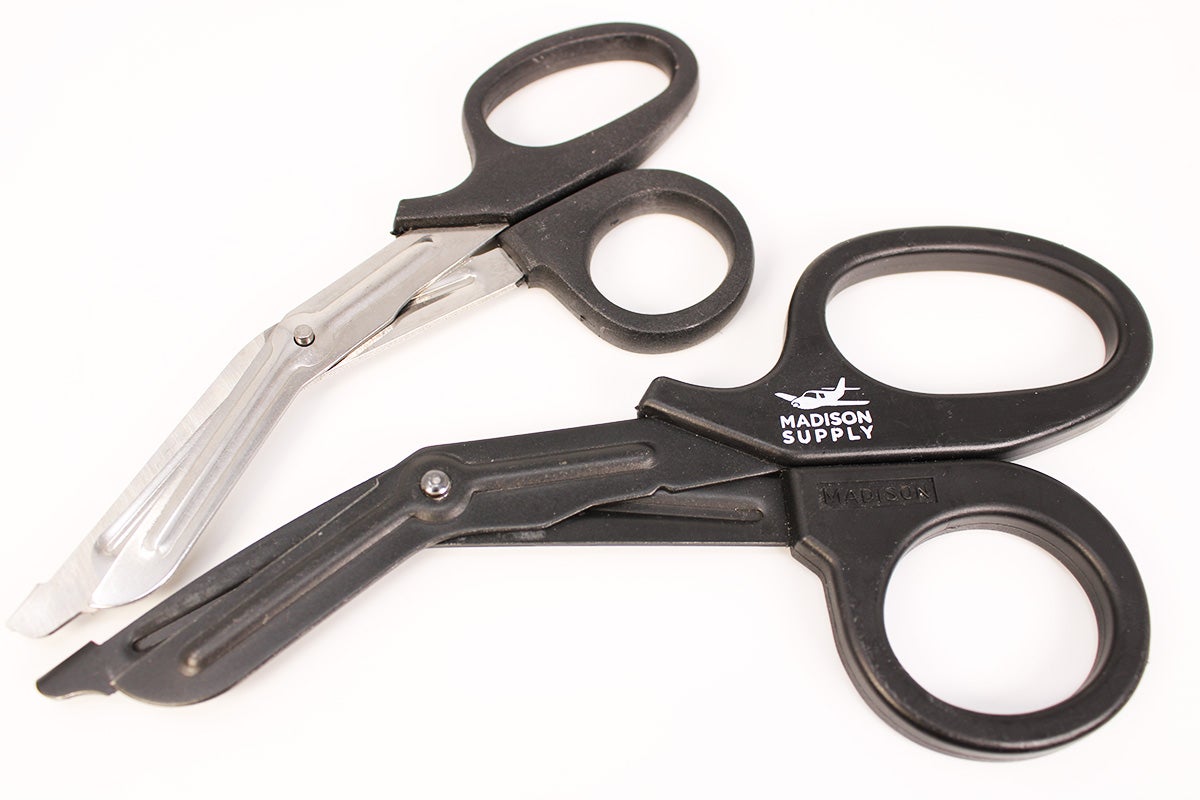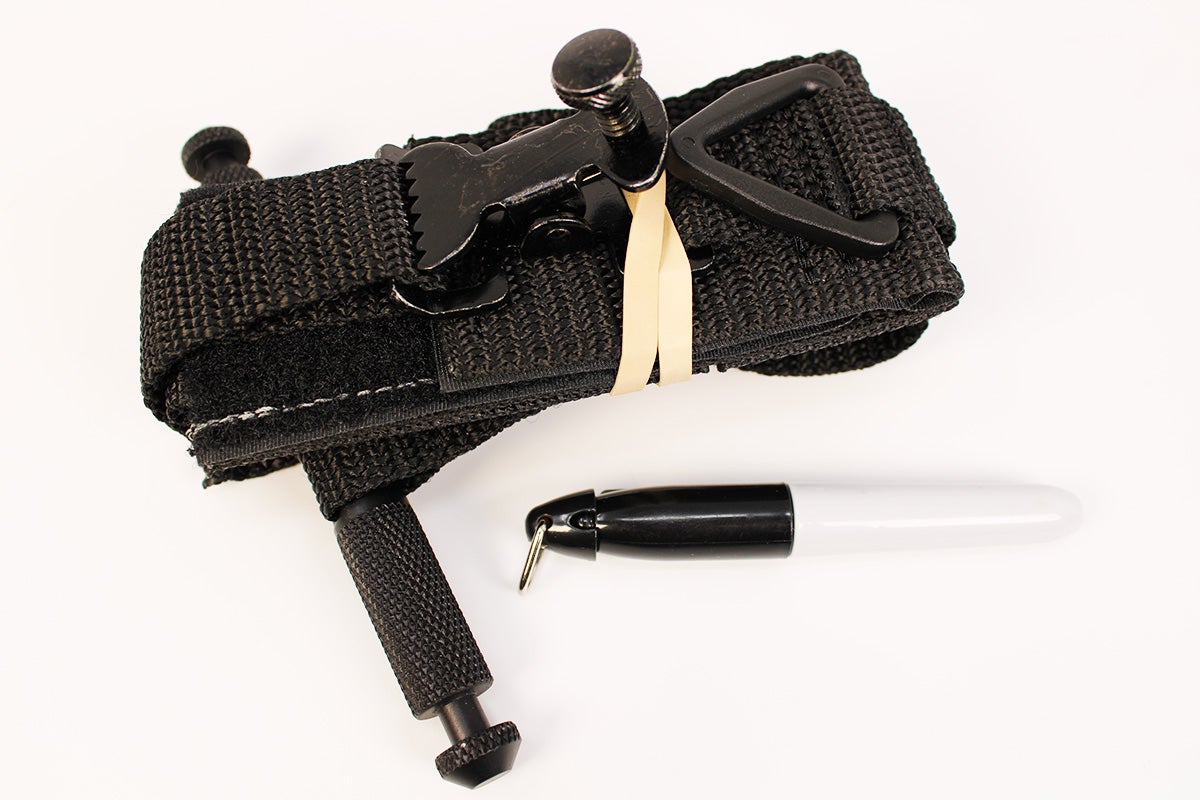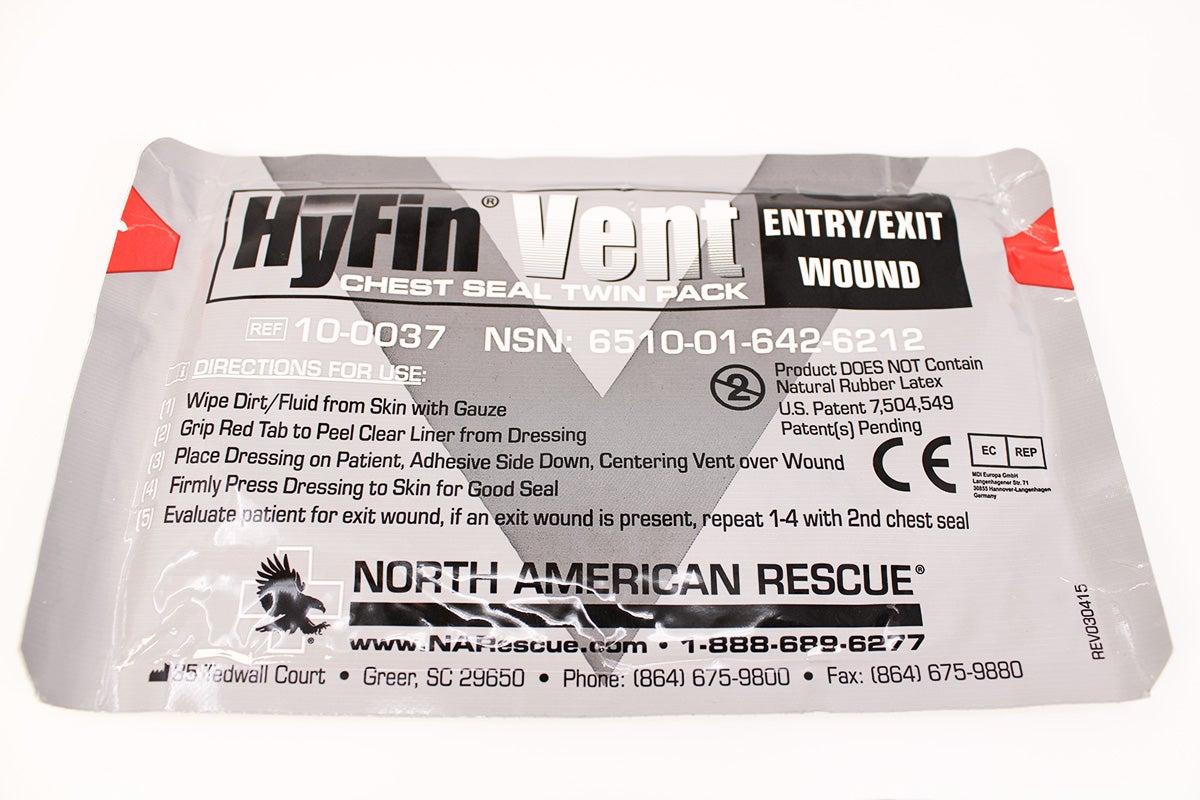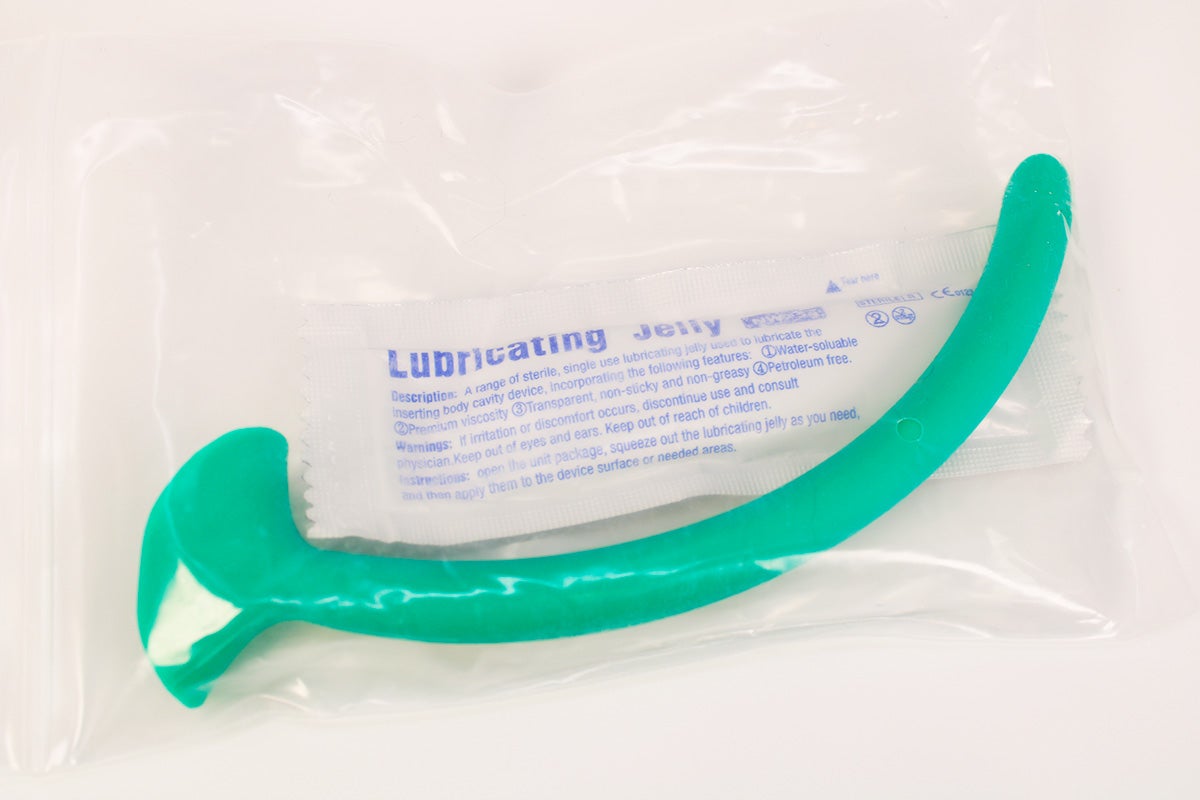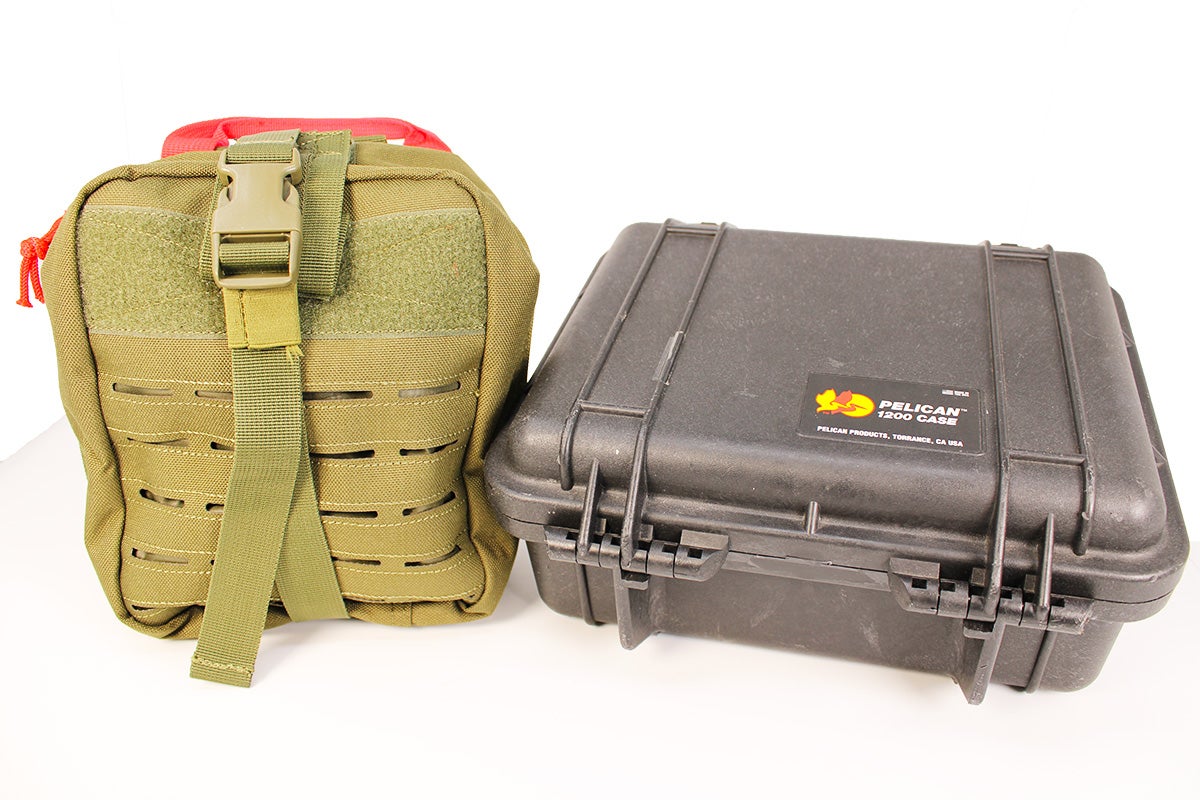IFAKs: Building an Effective Individual First Aid Kit
Travis Olander 02.01.23

An IFAK isn’t just something that preppers and “tacticool” guys and gals carry. A proper Individual First Aid Kit is a piece of kit that every household and vehicle should maintain. An IFAK is also a responsible investment any time you’re at a shooting range, or camping or hiking.
You could spend hundreds of dollars on a whizz-bang setup from some branded retailer. But building a quality IFAK doesn’t have to cost you an arm and a leg (though it might help save a limb). You can piece together an effective first aid kit designed for just about every form of injury or trauma for under $200.
An individual aid kit should be capable of:
- Treating burns
- Treating lacerations
- Disinfecting wounds
- Maintaining airways
- Sealing chest wounds
- Stabilizing bone breaks
- Controlling arterial bleeds
Sure, some of the above injuries sound extreme. But consider that any of those conditions can be caused by an automotive collision, a negligent discharge of a firearm, or a simple fall while hiking or engaging in recreation.
The Ideal IFAK Loadout
So, what medical equipment should you invest in to properly address these conditions temporarily, until medical personnel can intervene? Let’s take a look at what to put in your IFAK.
Basic Bandages
Never skip out on the stuff you need to treat minor wounds. A lot of folks overlook simple Bandaids and small gauze, focusing on trauma treatment. But you don’t want to waste an expensive pressure dressing on a mild laceration. For small cuts and scrapes, I like to keep simple compressed cotton gauze alongside an elastic bandage and Coban wrap.
Burn Ointment
It pays to be equipped with burn cream or ointment. Trying to treat a burn with water can cause more damage and blistering. Some simple Alocane burn gel works great, and regular old Neomycin (you probably know it as Neosporin) can work in a pinch. Both of these treatments take up little space, and a little bit of application goes a long way as mitigating further damage.
Trauma Dressings, Gauze
For larger lacerations and wounds that require some extra attention (but that fall short of requiring a tourniquet) a trauma pressure dressing is your best friend. These bandages measure about 6″ wide and include a padded center with elastic bands. Most importantly, they include a plastic capture cuff that maintains pressure once the dressing is cinched down. You may recognize these bandages by their colloquial name: Israeli Bandages.
Clotting Agents
Clotting agents (most often Celox or QuikClot) can help drastically cut down on heavy bleeds. Deep hemorrhagic wounds should be treated with clotting agents by default, even if a tourniquet is applied. These hemostatic agents help seal smaller vessels and can preserve damaged tissues in a wound site.
Disinfecting Agents, Gloves
Saline solution, alcohol pads, and nitrile gloves should always accompany a first aid kit. This not only reduces the risk that an injured person suffers from infection, gangrene, and septic shock; it helps prevent you from potentially contacting blood-born illnesses that may already be present.
Splint and Cravat
A limb splint is critically important for stabilizing fractures. A splint also helps prevent further damage to surrounding tissue, including bone fragments and breaks from puncturing vessels and causing further injury. If you’re alone and need to self-rescue after suffering a break in a limb, a splint could dramatically aid in regaining safe mobility, which could safe your life.
A cravat (cloth sling) is a great complement for arm and hand breaks. One can be folded small and it’ll take up practically no weight or space when stowed with a splint.
Trauma Shears
Clothing often gets in the way of assessing and treating a wound, and attempting to decloth an injured person is likely to cause more pain, bleeding, and injury. A good pair of trauma shears is a staple of any first aid kit. Most are stainless steel, but some can also be coated with nitride or powdercoat to prevent rust and corrosion while being stored long-term.
Tourniquet
A proper windlass-equipped tourniquet is a must for any IFAK. This writer has long trusted the North American Rescue CAT, or simply C-A-T (Combat Application Tourniquet), which is a favorite among combat medics, law enforcement, and infantry. It’s always important to note the time a tourniquet is applied (“T-time”). A tourniquet causes all blood flow to cease and, once applied, the affected limb’s tissue will immediately begin to die from hypoxia (lack of oxygenated blood).
A permanent marker should be used to note the T-time on the tourniquet and on the skin. Write the time in an obvious location, like atop the hand or, ideally, the forehead. A tourniquet is a ticking bomb that should only be applied to avoid arterial or otherwise life-threatening blood loss. Ideally, a tourniquet shouldn’t be left for more than two hours – but if that amount of time elapses without medical intervention to stop the bleed, do not remove it.
Vented Chest Seal
In the event of a puncturing chest wound, a vented chest seal can buy critical time and prevent a tension pneumothorax (collapsed lung, or air in the chest cavity outside the lung) from getting worse. A pneumothorax is life-threatening, so a chest seal should be applied as soon as the puncture is identified.
Importantly, do not attempt a chest needle decompression without training. You may stumble upon this emergency procedure while looking for chest seals. Not performing this procedure correctly is likely to exacerbate the existing wound at best, or at worst, cause a rapidly fatal injury.
Naso-pharyngeal Airway
An injured person may experience shock or lose consciousness. Coupled with severe trauma, this is likely to inhibit regular breathing, which could lead to death. A naso-pharyngeal airway is a simple rubber tube that’s lubricated and placed through the nasal cavity, aiding in breathing. This airway device can also help prevent suffocation in the event of an injury of the jaw or tongue.
This IFAK List Isn’t All-Inclusive
A good individual first aid kit is universally useful, but it should also equipped for intended situations and environments: If you’re in a maritime setting, your IFAK could include some sting relief wipes, or Dramamine tablets to mitigate motion sickness. If you’re keeping your IFAK in a vehicle, it’s a good idea to include a small flare, or two. If your kit’s meant for hiking or camping, throw in a reflective Mylar blanket and some matches. They’ll both help prevent hypothermia and aid in signaling aircraft.
Storage Case / Bag
Keeping all these medical goodies secured and easily accessible means getting the proper storage system. A simple ripstop bag or small hard case (like a Pelican case) is a perfect solution. This writer keeps both of these containers topped off with all the items described in this guide. On more than one occasion, these IFAKs have assisted in treating injuries on the job, at the site of an automotive collision on the commute home, and while camping on the Appalachian Trail.
